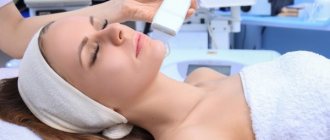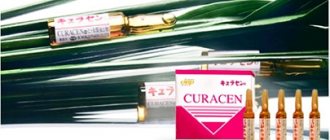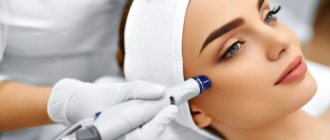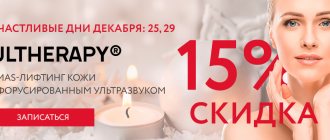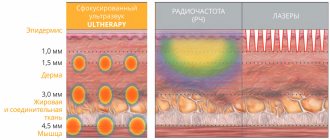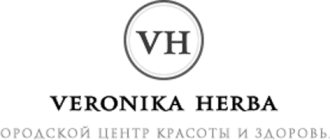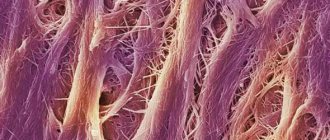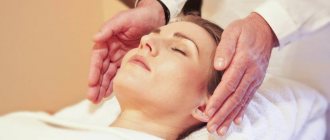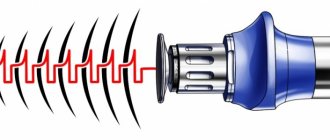Remember “The Fifth Element” - the film by Luc Besson, where a laser beam, micron by micron, restores the body of Milla Jovovich?
Only 20 years have passed, and science fiction has become closer - cosmetology has learned to work at the micro level and restore skin health cell by cell.
Photodynamic laser therapy Laser M ask specifically eliminates damaged cells and affects the microprocesses of the skin. This new procedure stimulates collagen renewal, skin regeneration and lifting, eliminating redness, vascular and age-related problems without affecting healthy tissue.
What is photodynamic cosmetology
As we age, our skin changes. The synthesis of collagen and elastin, which provide the framework for soft tissues and give them firmness and elasticity, slows down. The skin begins to sag, becomes drier, wrinkles and areas of pigmentation appear. Cells renew themselves twice as slowly.
Photodynamics Laser Mask (abbreviated PDT) is a new word in cosmetology. The method is based on the ability of photosensitizer drugs to selectively accumulate in so-called energy-deficient zones - in damaged, inflamed, defective and old cells. Then, under the influence of laser radiation, these energy-deficient zones are also selectively destroyed without any effect on healthy cells.
This is what a rejuvenating photodynamic facial therapy procedure looks like. In just 40 minutes, it specifically and painlessly eliminates almost all age-related problems.
This modern technology allows you to achieve maximum results without pain, adverse reactions and complications.
Equipment for PDT
The light used for photodynamic therapy can come from a laser or other sources. Domestic laser therapeutic and diagnostic equipment has been developed for photodynamic therapy. Different types of laser irradiation are used: multi- and single-position, interstitial, non-invasive and invasive.
The laser beam can be directed through fiber optic cables (thin fibers that transmit light) to deliver light to areas inside the body. For example, a fiber optic cable can be inserted through an endoscope (a thin, lighted tube used to view tissue inside the body) into the lungs or esophagus to treat cancer in those organs.
Other light sources include light-emitting diodes (LEDs). They can be used to treat superficial tumors such as skin cancer.
How does photodynamic facial therapy work?
- An activator gel is applied to the face: it will help the laser mask penetrate deeper.
- The second step is to apply a photosensitizer gel.
- For 20–40 minutes, the face is placed under polarized laser light in scanning mode.
- The photosensitizer reacts chemically with the laser light to release active oxygen. This powerful natural oxidant causes biological mechanisms of cellular destruction.
- The death of defective cells stimulates recovery processes. Mitochondria, the energy stations of cells, are activated, the synthesis of ATP, the main source of cellular energy, is stimulated, division of young cells and capillary growth begin, collagen synthesis in the affected area increases by 450%.
After treatment, you should use creams with a high SPF protection factor for several days. Minor redness after the procedure goes away on its own.
FAQ
When is PDT prescribed?
Photodynamic therapy is prescribed to treat actinic keratosis (AK), a precancerous skin condition that appears as rough, scaly patches. Actinic keratoses develop as a result of prolonged exposure to the sun. They are a form of sun damage that can become cancerous if left untreated, so doctors recommend seeing a doctor at the first sign of symptoms.
PDT is also an effective treatment for skin melanoma (squamous cell carcinoma, superficial basal cell carcinoma) due to its ability to target and kill cancer cells.
The treatment is also used to combat severe acne, psoriasis and rosacea, as well as improve overall skin tone and texture by stimulating collagen production.
Main objectives of photodynamic therapy
The main role in PDT is assigned to active or signaling oxygen formed in protein and lipid molecules and intracellular organelles when exposed to a certain quantum of light. In this case, the chain of the molecule is broken and destroyed.
The molecules of the photosensitizer used, absorbing a light quantum, pass into a singlet long-lived state. The photodynamic response is enhanced. Molecules in the triplet state transfer energy to the oxygen molecule, which goes into the signal state. Thus, molecules enter into chemical reactions.
After several cycles, the photosensitizer burns out and loses its ability to take part in photodynamic reactions.
Contraindications for PDT
Photodynamic therapy is not performed for porphyria, a group of hereditary diseases associated with impaired metabolism of pigments involved in the synthesis of heme (a substance that is part of hemoglobin).
An absolute contraindication is the period of lactation (breastfeeding), severe renal failure and the 1st-3rd trimester of pregnancy. The procedure is not performed if you are intolerant to sunlight (porphyria), or if your skin is hypersensitive to radiation.
Side effects of photodynamic therapy
Sodium porfimer makes the skin and eyes sensitive to light for about 6 weeks after treatment. Therefore, patients are advised to avoid direct sunlight and bright indoor lighting. Sunscreens will not protect your skin from photosensitivity reactions.
Photosensitizers tend to accumulate in tumors. As a result, damage to healthy tissue is minimal. However, PDT can cause burns, swelling, pain, and scarring in nearby healthy tissue. Other side effects of the procedure are related to the area being treated. These may include cough, trouble swallowing, abdominal pain, painful breathing, or shortness of breath; these side effects are usually temporary. In severe cases, persistent post-inflammatory redness may occur.
Swelling in the treated area can lead to pain and problems with tissues and organs. Sometimes PDT treatment can cause the immune system to work differently, usually by stimulating its activity. Sometimes it may weaken for a while. In very rare cases, PDT can cause skin cancer in the area where treatment was performed. Some researchers believe that this occurs if the immune system is weakened.
The development of adverse reactions is influenced by the type of drug used and the time between its administration and the application of light. The level of sensitivity of the skin after treatment is also important.
How is dynamic monitoring carried out?
After PDT, dynamic monitoring of patients is carried out on an outpatient basis. To evaluate the result of the procedure, you must visit a doctor.
The main criteria for determining the effectiveness of treatment:
- absence of palpation and visual signs of tumor;
- reduction in the size of education by 50%;
- reduction of neoplasm by less than 50%.
Partial resorption, in which the tumor is reduced by more than half, is assessed as a positive therapeutic effect. To determine the effectiveness of PDT, you need to visit a specialist after 2 months. This period of time is sufficient to reduce the formation and epithelization of skin defects.
If after 2 months the result is unsatisfactory, then a repeat biopsy or scraping is performed for cytological or histological examination. In the presence of atypical cells, the result is regarded as partial resorption.
Photodynamic skin therapy triggers biological rejuvenation at the cellular level
The visible effect is observed after the first procedure, increases over several months, and lasts for about one and a half to two years.
Due to the synthesis of collagen and elastin, the skin becomes elastic, smooth and fresh. The skin texture is evened out and the oval of the face is tightened. Wrinkles become less noticeable, and after a series of procedures they are smoothed out.
The synthesis of melanin pigment is blocked - skin whitening occurs, the tone becomes more even.
Due to division, the number of healthy cells increases . Scarred, inflamed and other destructively altered tissue is replaced by new, healthy cells.
The PDT method stimulates the formation of new capillaries . Skin nutrition improves: it is moisturized, less susceptible to the negative effects of various factors and recovers faster.
Is there a recovery period?
The procedure is very comfortable and does not cause pain and does not require anesthesia. Exfoliation gels based on natural ingredients give a feeling of freshness and high-quality skin care. And photosensitizers rich in antioxidants give the skin a radiant and healthy appearance.
The procedure itself is very comfortable and well tolerated by patients, and the reviews on it are always brilliant if a professional works!
We are waiting for you at our center. You can consult or sign up for a procedure with our cosmetologist Lola Sabirovna Babaeva by phone. Waiting for you!
What problems does a laser facial mask solve?
The photodynamic mask has a regenerative, anti-inflammatory, analgesic, decongestant, immunomodulatory, antiallergic effect and shows good results in the treatment of:
- acne,
- post-acne,
- freckles,
- keratosis,
- rosacea,
- chloasma,
- scars,
- changes in collagen structure,
- scars,
- psoriasis,
- hyperpigmentation,
- enlarged pores,
- striae,
- rosacea,
- other skin defects.
Photodynamic facial skin rejuvenation is performed in various modes
To perform the photodynamic procedure, a laser with different radiation powers and wavelengths is used.
Red waves with a length of 660 nm have the greatest penetrating power. The red mode procedure is an intensive protocol and takes about 40 minutes. It stimulates the production of the skin's own collagen and effectively solves many problems associated with aging: dryness, age spots, sagging skin.
After 2-3 intensive procedures, you can switch to superficial 20-minute procedures.
Blue color has less penetrating power. Laser in “blue” mode has an excellent anti-inflammatory and antibacterial effect. Therefore, it is indicated for the treatment of acne and other inflammatory processes on the skin.
Action and treatment areas
To carry out the procedure, special LED radiation and a special photosensitizing gel HELEO4TM are used.
It has a unique composition, including a complex compound of trismeglumine salt Chlorin E6. This chlorin derivative has the highest degree of purification among its analogues. In addition, zinc is introduced into the structure of trismeglumine in liposmata, which enhances the penetration of the gel through the epidermal barrier and accelerates the interaction of the photosensitizer with the cell under the influence of the HARMONIA LED PRO lamp. Carefully calibrated wavelengths of three useful light spectra are ideally combined with HELEO4TM active gels and stimulate photochemical reactions in skin cells. Each spectrum has its own effect: improving blood circulation, restoring water balance and lymph movement, anti-inflammatory and antimicrobial effects, removing toxins, activating the production of collagen and elastin, suppressing pathological processes and starting the regeneration of healthy cells, activating cellular and humoral immunity, increasing metabolism.
The method is used for the face, neck and hands, as well as in the décolleté area.
Other indications for Laser Mask
PDT is effective against papillomavirus . The technique eliminates the virus even before papillomas and warts appear on the skin. Cells infected with the virus accumulate the photosensitizer and die after exposure to the laser.
The procedure has the same effect on the herpes simplex virus.
Photodynamics increases the effectiveness of traumatic procedures such as laser resurfacing and plastic surgery. Laser exposure stimulates collagen: laser injuries and postoperative sutures heal quickly, evenly and unnoticeably.
How do doctors select the characteristics of a laser and a photosensitizer to defeat cancer?
First, drugs are tested in cell cultures and animals to determine whether they have a therapeutic effect and to determine its safety for health. Next, the dosage is selected and recommendations for the use of the drug are given depending on the size, shape and location of the tumor.
Low-energy lasers are suitable for photodynamic therapy, since its effect, with a correctly selected dose of radiation, is not accompanied by pain due to tissue heating. This value does not exceed 400 mW/m², so the patient does not experience pain or a burning sensation. Thus, when using a laser for PDT, there is no need for either local or general anesthesia, and the treatment becomes available to patients with contraindications to pain medications.
Benefits of photodynamic rejuvenation
- This is a painless procedure that can even be called pleasant,
- the effect is noticeable immediately after the first session,
- the procedure is suitable for preparing for important events - it makes the skin smooth, elastic and soft,
- acts only on changed cells and does not affect healthy ones,
- no side effects after PDT,
- no rehabilitation period. The laser mask does not cause redness or irritation of the skin. After the procedure, you can immediately continue your day as planned.
- non-invasiveness,
- long lasting – more than a year – effect,
- versatile effect on the skin,
- cumulative effect: recovery processes after completion of the course continue for several months,
- has no contraindications or age restrictions.
- effective both on its own and in combination with other procedures.
What makes it unique?
Babaeva Lola Sabirovna, cosmetologist at the Hospital of the World:
“The uniqueness of photodynamic therapy in cosmetology is its effect on cells that no longer perform their functions properly. The “smart” device recognizes them and works with them using light waves of different lengths. Elimination is almost instantaneous, the cell “explodes”, is put into forced apoptosis and removed from the body, fibroblasts are stimulated. All this gives an amazing effect of qualitative improvement in skin condition and speedy rehabilitation after aesthetic surgery.”
How many procedures will be required
The duration of the course of photodynamic therapy is always selected individually and is determined by the initial condition of the skin.
The classic scheme is 6 procedures with an interval of 3-4 days. Acne treatment requires 8 sessions. To prepare for surgery, 1–2 procedures are sufficient.
Expert comment:
“2 days after PDT, I recommend additional therapy.
To significantly enhance the restoration processes launched by the Laser Mask, I give the skin additional “building material” and a favorable environment - I carry out plasma lifting, perform injections of collagen or hyaluronic acid.
This significantly enhances the results of photodynamic therapy and makes them more sustainable.”
Anna Smirnova, dermatocosmetologist at the Platinental Medical Center.
Questions
Is it painful to do PDT?
No, it's completely painless. During the procedure, the patient will feel warmth, slight tingling, tickling-like sensations, or nothing at all. Both are normal.
When can you see the effect and how many sessions are required?
The effect can be seen after 1-2 visits. The standard duration of a photodynamics course in cosmetology is 4-6 sessions. The exact amount is determined by the doctor based on the patient's condition.
What are the contraindications?
Not recommended during pregnancy and lactation, individual intolerance to components or light rays, the presence of a pacemaker, severe forms of cardiovascular diseases and nervous system disorders, serious disorders of the liver and kidneys, photodermatosis, as well as while taking medications that increase the photosensitivity of the skin. Read more here.
At the same time, if a “complex” patient has a problem that requires treatment, the doctor will most likely make a choice in favor of photodynamics, as the most gentle of the effective procedures.
What are the side effects?
There may be slight redness in the affected area, which will subside within 24 hours.
What skin types is it suitable for?
For anyone.
Does PDT have other uses besides treatment?
The ability of photosensitizers to fluoresce allows the affected area to be distinguished from the surrounding tissue. This makes it possible to use drugs for fluorescent diagnostics, since its concentration in the affected tissue is higher than in healthy tissue. When illuminated with ultraviolet or blue light in the visible range, the tumor is clearly visible in the form of a red glow. This allows you to examine affected areas that are not visible in daylight, which makes it possible to diagnose cancer early.
or sign up online
+7
call me back
Ask a Question
Does PDT have side effects?
The restriction on staying in direct sunlight after photodynamic therapy is due to the nature of the procedure. The photosensitizer accumulates not only in affected tissues, but also in healthy ones, albeit in much smaller quantities. This causes the skin to become photosensitive for a while. With prolonged exposure to sunlight, redness, swelling may appear, and then pigmentation occurs, like a tan.
Currently, photosensitizer drugs have been developed that can reduce the side effect to a minimum. This is achieved by quickly removing them from the body.
Duration of application of the method and its effectiveness
Since 2005, the photodynamic therapy method has been patented and successfully used in the treatment of rheumatoid arthritis, including juvenile arthritis, in the rehabilitation center (St. Petersburg) by physiotherapist Sergei Nikolaevich Kurchenko. Since October 2011, this method has been used in our medical center.
We note the high effectiveness of the method in the treatment of Becker cysts, when after just two procedures a pronounced reduction in the size of the cystic formation is noted.
When treated with photodynamic therapy for Perthes disease (destruction of the head of the femur due to impaired blood supply), the need for bed rest is reduced by more than a year.
This fact is of particular value due to the peculiarity of the disease: it is typical mainly for children 3-7 years old, lasts for years and requires relative immobility. The use of photodynamic therapy allows a child with Perthes disease to get back on his feet as quickly as possible. The number of complications is also significantly reduced, since the formation of the femoral head occurs as physiologically as possible.
It is impossible to overestimate the role of the technique in the treatment of patients with intervertebral hernias. This disease is characterized by intense and sometimes unbearable pain. The use of photodynamic therapy allows such patients to return to a full life earlier than usual.
Professionals emphasize that PDT is not the only method for treating intervertebral hernias, but is used in combination with other methods of treating the disease.
What is needed to undergo treatment?
- Make an initial appointment with a doctor to select an individual treatment method for your disease and achieve maximum effect. This is necessary because we have more than 15 types of treatment, not to mention a wide range of unique treatment methods.
- Our doctor will select the most effective treatment methods for you, taking into account all the characteristics of your body and existing diseases, inform you in detail about treatment tactics and answer all your questions.
- Take with you to your appointment the results of all previously performed studies, photographs, medical documents - i.e. everything that is available. It will be important for your doctor to understand the holistic picture of your health.
There are contraindications. Specialist consultation is required.
Results of the first procedure and the full course of HELEO4 phototherapy
Reviews from our patients who have completed the full course are filled with delight and gratitude! Anti-edematous, anti-inflammatory and mild analgesic effects are noticeable after the first procedure. This happens due to the fact that photodynamic therapy normalizes blood flow and lymph movement, enhances cellular metabolism, and stimulates the formation of elastin and collagen in tissues. The work of the sebaceous and sweat glands is also stabilized, sebum regulation is normalized - the skin is cleansed, the number of inflammations and rashes is reduced.
The dynamics show a noticeable decrease in pastiness, leveling of the microrelief, and narrowing of enlarged pores. In the presence of acne, there is intense resorption of papulopustular elements, a reduction in the area of redness, relief of inflammation and smoothing of post-acne scars.
The full course of photodynamic therapy HELEO4, judging by the reviews and clinical practice of Revital specialists, gives the most pronounced and lasting effect of lifting and rejuvenation. The skin becomes more elastic and elastic, even deep wrinkles are visually reduced, and the contours of the oval face are tightened. Healthy color, freshness and natural radiance returns.
Does drug resistance occur in PDT?
Logically speaking, cancer cells should not acquire resistance to photosensitizers, since reactive oxygen species act as a destructive factor. Without oxygen, neither healthy nor cancer cells can exist, so oxygen resistance is out of the question, otherwise the cells are doomed to die out.
At its core, photodynamic therapy does not have a mutagenic effect, that is, no genetic changes occur in cells. As is known, the mechanism for the emergence of resistance is associated with the emergence of tumor strains that become resistant to drugs, but in our case this does not happen.
As practice shows, with multiple repeated sessions using the same photosensitizer, cases of addiction were not observed.
